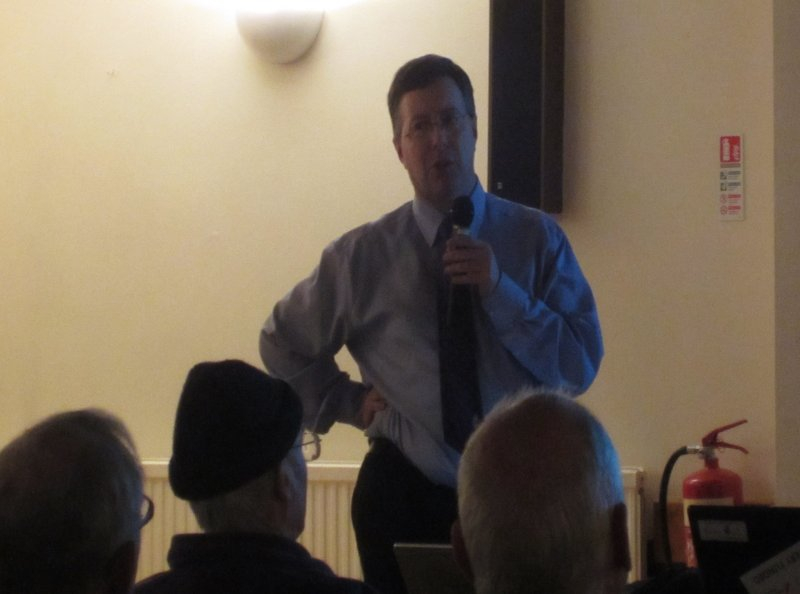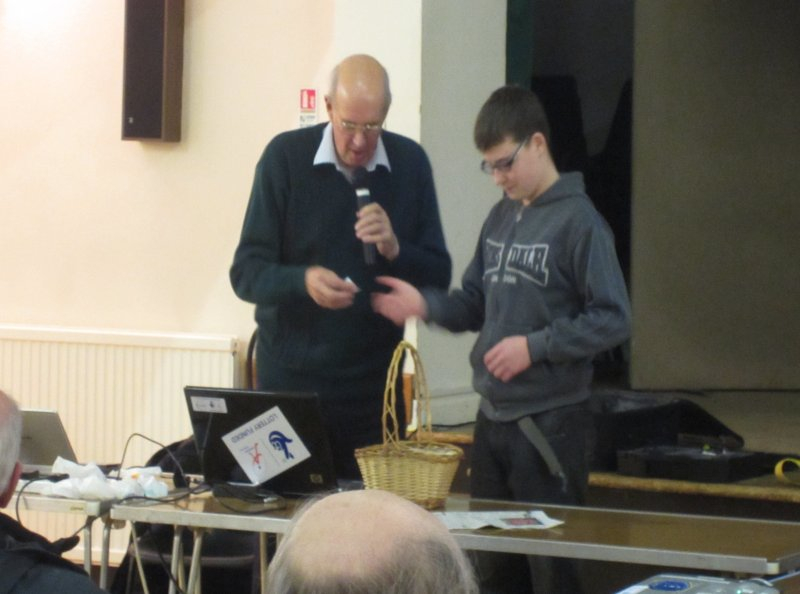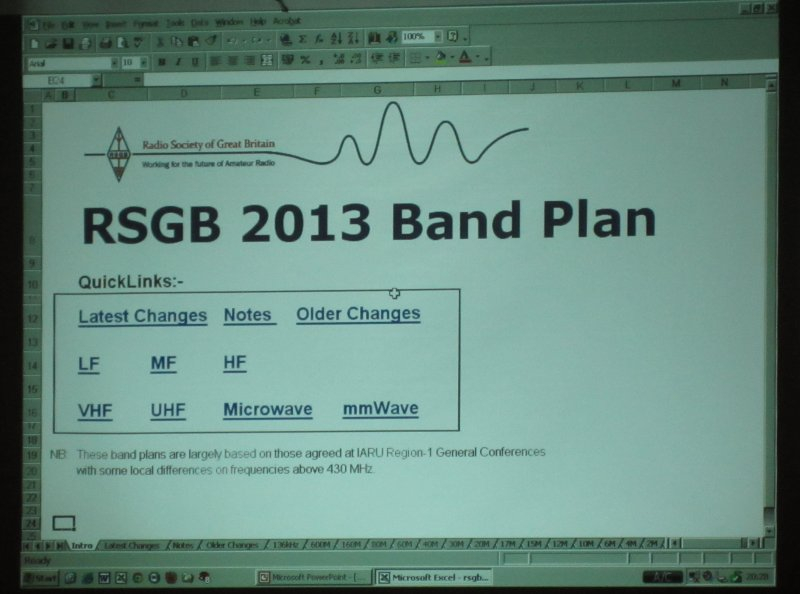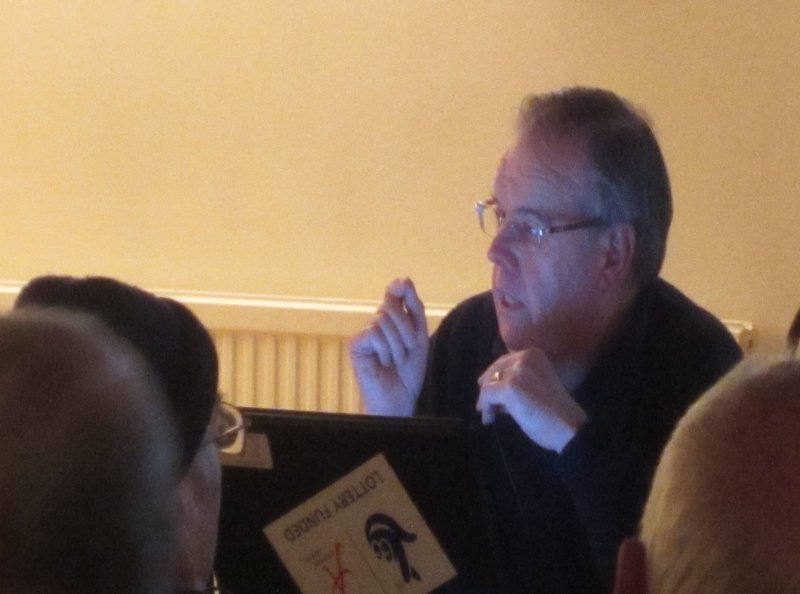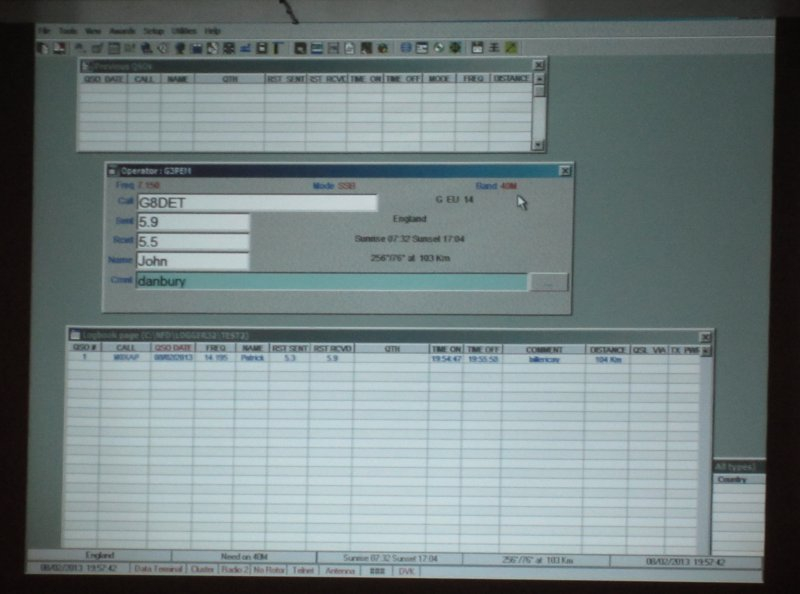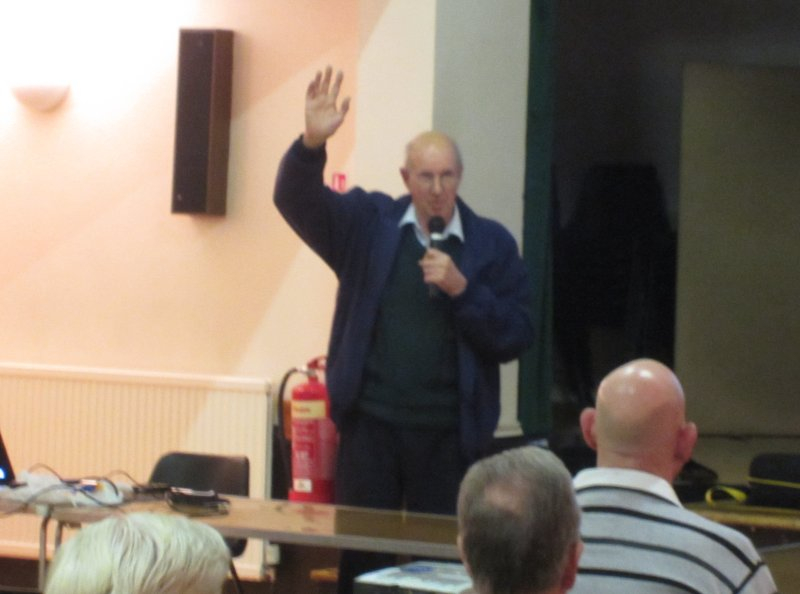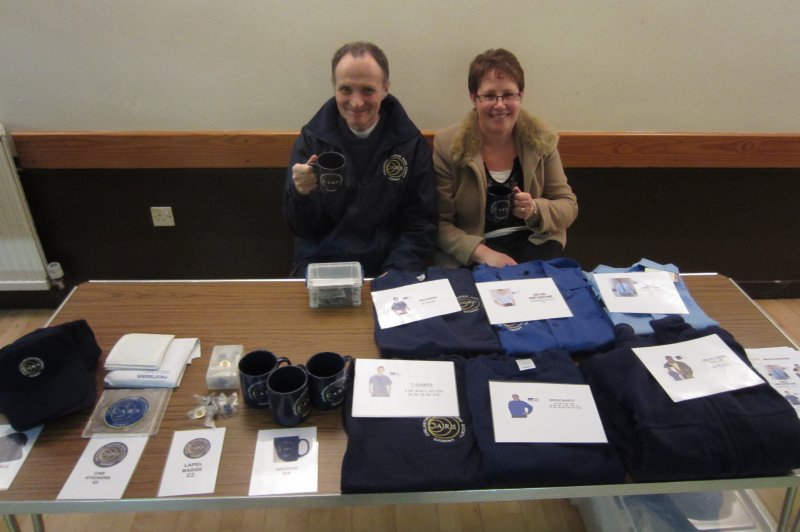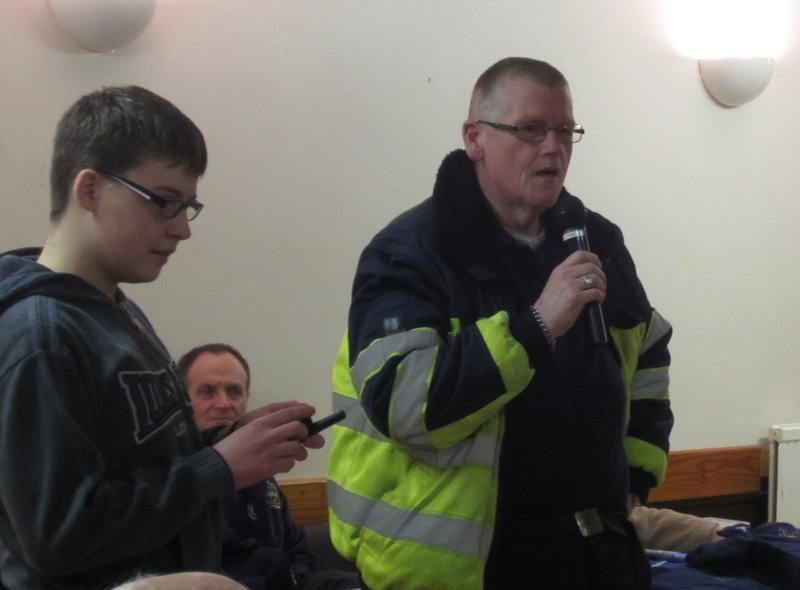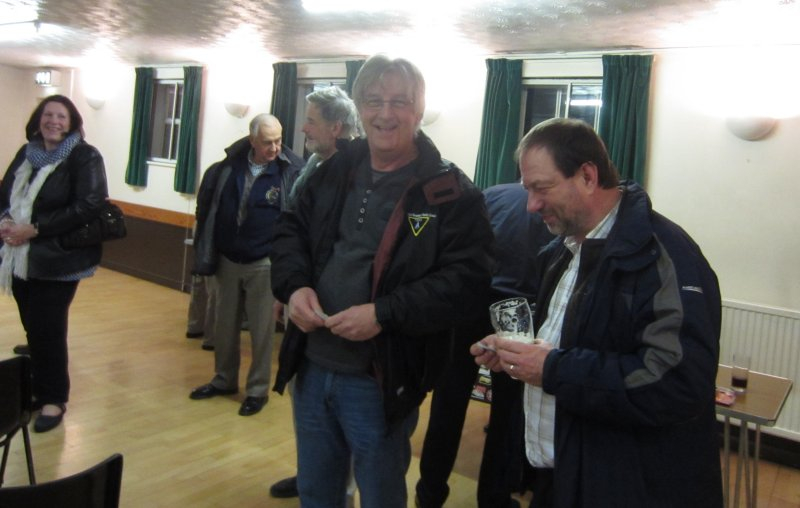Report on the CARS February club night started at 1930 on Friday the 8th of February at Great Baddow Village Hall.
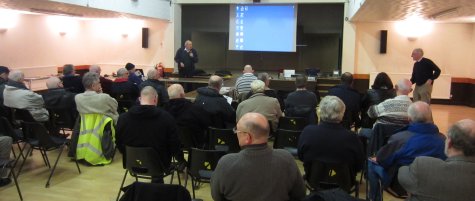
The evening started off with a few announcements from Chairman John Bowen G8DET, then on to the first of the evening’s two talks:
Electronic Logging
Carl G3PEM explained to members that CARS will be taking part in operations to celebrate the centenary of the RSGB, and that CARS will be operating G100RSGB on the 21st and 22nd of July. To support the RSGB challenge, all clubs are required to supply electronic logs in ADIF format.
Carl has been logging on computer since 1998. He pointed out that with over 50 logging packages out there, everyone thinks that the one they use is the best. CARS has decided to use Logger32 for the RSGB event.
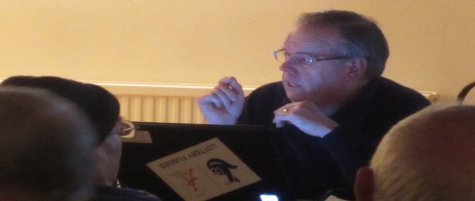
To help members new to Logger32, Carl then walked through the process of entering details of a QSO and adding it to the computer’s electronic log. Carl also talked briefly about the world map for greyline propagation, the RTTY interface, and the gridsquare calculator.
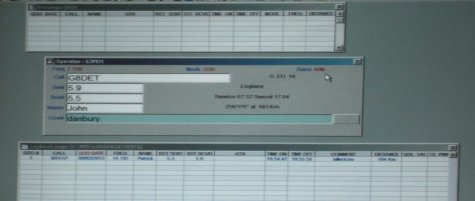
Logger32 is a powerful application, but to keep operations simple, only the basic logging features will be used. Based on our experiences of Logger32, the package comes into its own when connected to a radio, as the software can control the rig. For the RSGB event, CARS will be keeping it simple and running the program as a stand-alone logger.
Carl’s demonstration was well received, and gave an excellent introduction to electronic logging. If you want to try Logger32, it’s a free download from www.logger32.net
Band Plan Changes
Murray G6JYB gave a very informative presentation on the 2013 RSGB Band Plan. Murray is well-placed to update members as he is the RSGB Band Plan Editor.
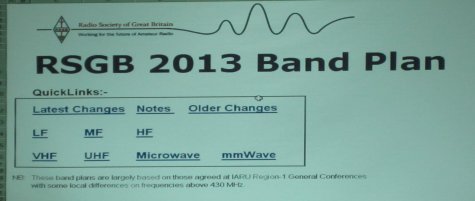
The presentation kicked off with the display of a scanned copy of the 1969 band plan. This showed far less allocation than we have now; 2 metres was a secondary allocation, and there were not a lot of digital modes.
Next, Murray outlined various changes in recent years, and offered information on how the plans are put together and reviewed. Then, on to the new changes:
- 2m data section changed, and changes to DStar simplex. A possible move for the 2m WSPR frequency may happen in April 2013 to avoid interference.
- A replan of 23cms
- Spectrum release: We’re losing 2.3 and 3.4GHz, which is an issue for ATV
- 472kHz became available to full license holders from 1st Jan… An NoV is required
- 5MHz band also became available from 1st of Jan (Full licence with NoV) – see the Essex Ham guide: Getting started on 5MHz. The 5MHz allocation is a tricky one, requires care, and may require you to modify your radio. A show of hands showed 3 or 4 members have used 5MHz
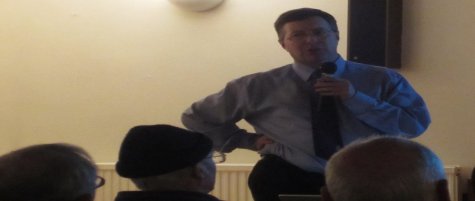
Wrapping up – Murray gave us a look at what’s next:
- Expect changes to the 70ms band plan (to include colour DATV and the 70cms beacon project)
- Possibly more VHF coming our way… 70.0-70.5MHz, 80-81MHz and 146-148MHz. Cross your fingers!
One of the key messages is to make sure that you’re not operating using an old or unmaintained band plan… And there are a lot of them about. The current band plan is here: RSGB Band Plan
Club Night Photo Gallery
For more on the Chelmsford Amateur Radio Society, go to www.g0mwt.org.uk/

